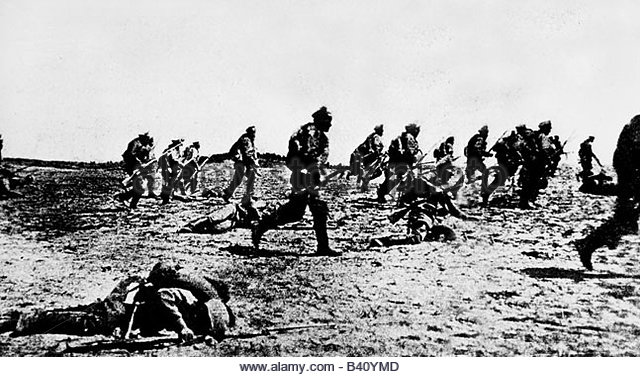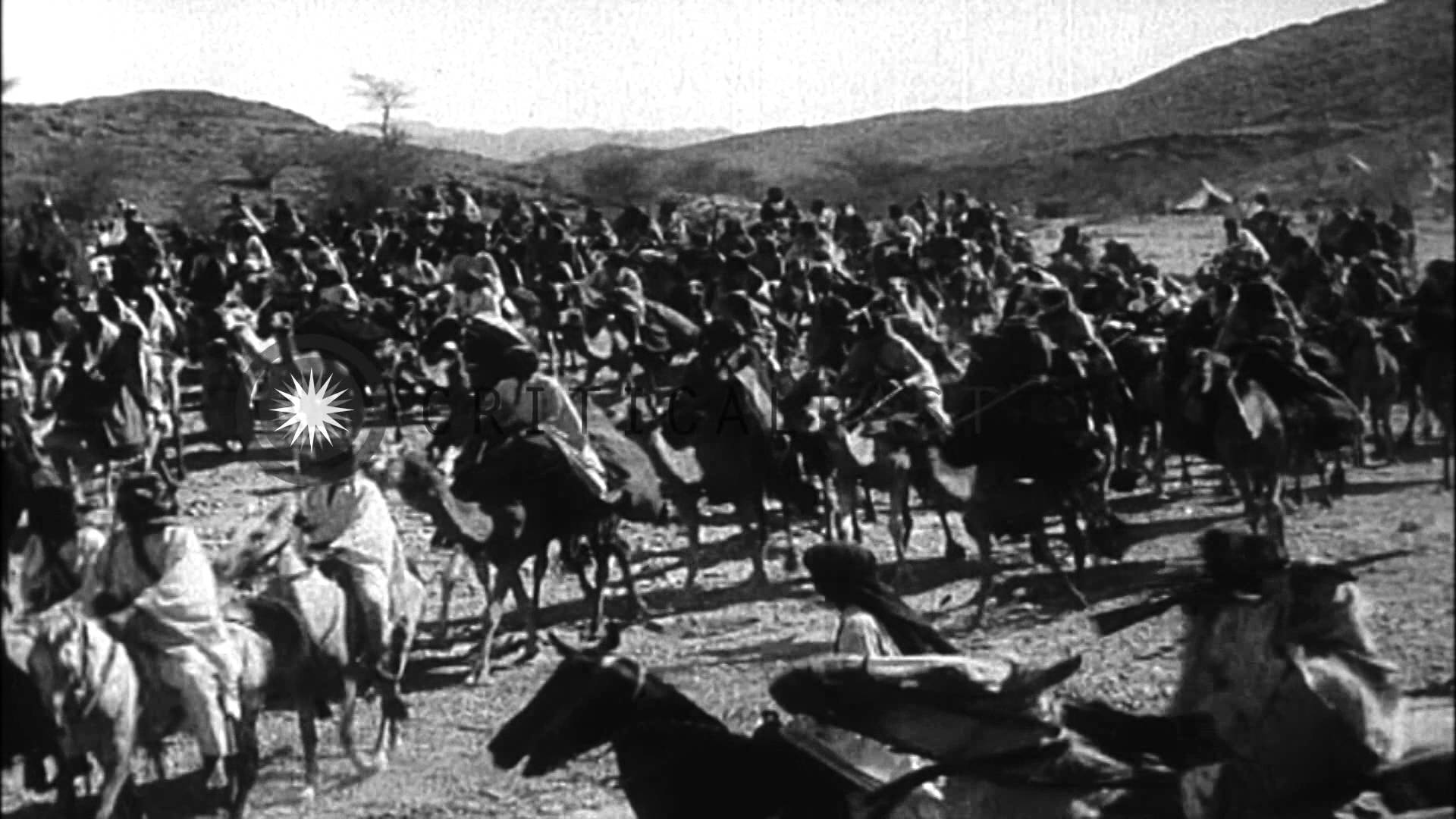Russians Mount Massive Offensive
In Middle East, the Arab Revolt.
British Lose a Leader
Special to The Great War Project
(2-5 June) It’s 2nd June, the day after the Jutland naval battle left thousands of sailors on both the British and German sides dead.
The Germans launch “a massive attack,” reports historian Martin Gilbert, “on the British lines in the Ypres Salient, [in Belgium] advancing seven hundred yards through the British trenches on a 3,000-yard front.”
At the same time, on the Eastern Front, the Russians launch the massive Brusilov offensive.
“This was Russia’s chance,” reports Gilbert, “to avenge the defeats of the previous year in Poland” and elsewhere in Eastern Europe.

Russian troops are readied for Brusilov offensive on Eastern Front, June 1916.
Just how massive is this Russian attack? It begins with an incredible artillery barrage of nearly 2,000 guns along a front line of 200 miles.
The Austrians outnumber the Russians in manpower, 200,000 soldiers as against 150,000 Russians.
But that matters little, according to one historian, in an environment of such fire power. Reports Gilbert, “after a few hours the barrage had wreaked havoc on the Austrian front-line trenches and made more than fifty breaches in the barbed wire.”
In addition, according to an official Austrian military account of the battle, “the entire zone of battle was covered by a huge, thick cloud of dust and smoke, often mixed with heavy explosive gases, which prevented men from seeing, made breathing difficult, and allowed the Russians to come over the ruined wire obstacles in thick waves into our trenches.”

Russian troops attack in Brusilov offensive on Eastern Front,, June 1916.
Sweeping forward, the Russians capture 26,000 Austrian troops in a single day, reports Gilbert. The shaken Austrians, writes war historian John Keegan…
“surrendered to anyone who would take them prisoner.”
Then comes an incident that shocks the British public, as well as the soldiers on the Western Front. A German submarine sinks a British cruiser, the Hampshire, in the North Sea. The ship is carrying Lord Kitchener, the British Secretary of State for War, Britain’s highest military leader. He drowns.
“For the public,” writes Gilbert, “he was the man who had constituted the strength and stability of the governing, war-making instrument.”
Elsewhere, a key development in the Middle East. On June 5th a century ago, the Arab Revolt erupts. Its target is the largest Turkish garrison in the Hejaz, a strategic territory on the Arabian peninsula. It is led by Sherif Hussein of Mecca and begins “outside the Turkish-controlled city of Medina.”
“By popular account,” writes historian Scott Anderson, “Sherif Hussein climbed to a tower of his palace in Mecca and fired an old musket in the direct of the city’s Turkish fort.”
“It was the signal to rebellion.”
But initially the Arab Revolt “though enthusiastic, was premature and unsuccessful.”
“An Arab force of 50,000,” reports Gilbert, “has only 10,000 rifles.”

Arab Revolt begins, Mecca and Medina, June 1916.
The Turks field a force of some 11,000. But they are far better equipped and trained than the Arabs, who are quickly driven off.
Still this is only the first days of the Arab Revolt. The plan calls for the British to lead. And on this day, a century ago, several British officers land secretly at Jeddah on the Red Sea. Among them is Captain T.E. Lawrence, who will become known in good time as Lawrence of Arabia.
“A new land front had opened,” writes historian Gilbert, “the tenth front then operational.”

Continue to enjoy these posts. All Quiet on the Western front in log dimensions.